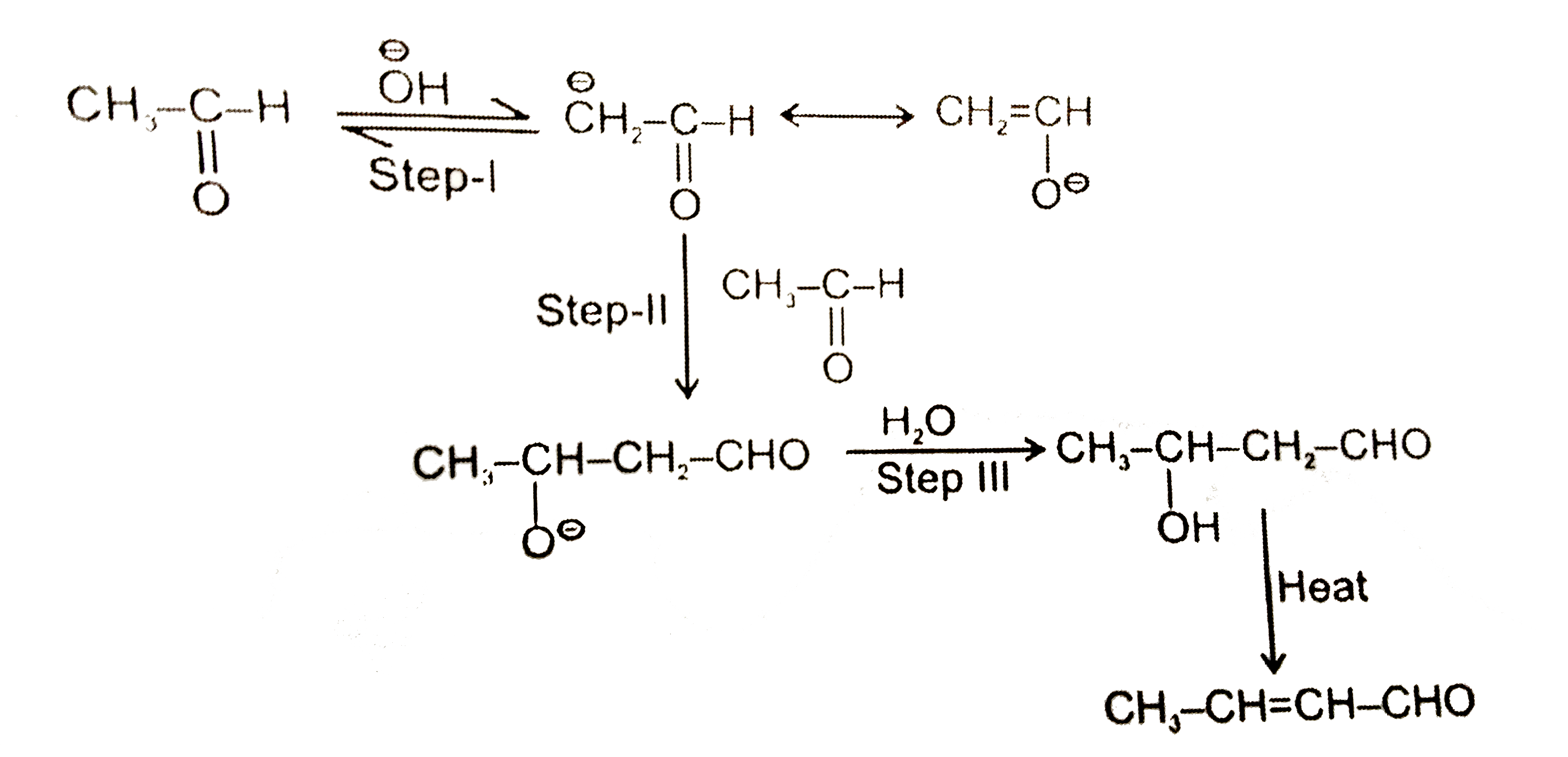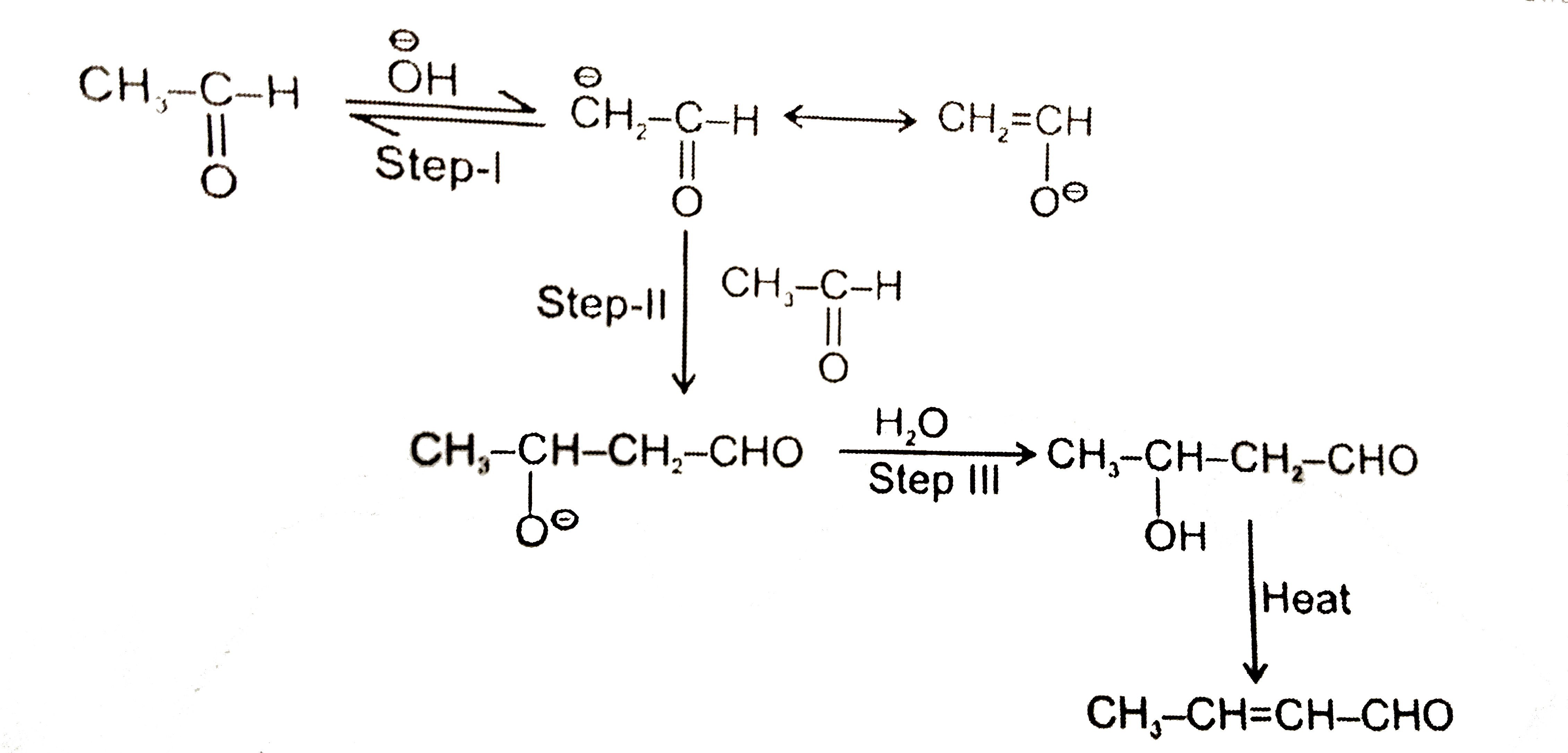In presence of Ba(OH)2, two molecules of acetone condense together to form ………………
To solve the problem of what two molecules of acetone form in the presence of Ba(OH)₂, we can follow these steps:
1. Identify the Reactants:
- We have two molecules of acetone, which is represented as CH₃COCH₃.
2. Understand the Role of Ba(OH)₂:
- Barium hydroxide (Ba(OH)₂) acts as a base in this reaction. It provides hydroxide ions (OH⁻) that will facilitate the condensation reaction.
3. Deprotonation of Acetone:
- The hydroxide ion (OH⁻) abstracts a proton (H⁺) from one of the methyl groups (CH₃) of acetone. This results in the formation of an enolate ion:
CH₃COCH₂⁻
4. Nucleophilic Attack:
- The enolate ion formed from the first molecule of acetone acts as a nucleophile and attacks the carbonyl carbon (C=O) of the second molecule of acetone:
CH₃COCH₂⁻+CH₃COCH₃→CH₃C(OH)(CH₃)C(=O)CH₃
5. Formation of the Intermediate:
- This reaction leads to the formation of a β-hydroxy ketone, which is an intermediate in the aldol condensation:
CH₃C(OH)(CH₃)C(=O)CH₃
6. Protonation:
- Finally, the intermediate can undergo protonation (addition of H⁺) to yield the final product:
CH₃C(OH)(CH₃)C(=O)CH₃→CH₃C(=O)CH₂C(OH)(CH₃)→Diacetone alcohol
7. Final Product:
- The final product formed is known as diacetone alcohol (4-hydroxy-4-methylpentan-2-one).
Final Answer:
In the presence of Ba(OH)₂, two molecules of acetone condense together to form diacetone alcohol.
---
- We have two molecules of acetone, which is represented as CH₃COCH₃.
- Barium hydroxide (Ba(OH)₂) acts as a base in this reaction. It provides hydroxide ions (OH⁻) that will facilitate the condensation reaction.
- The hydroxide ion (OH⁻) abstracts a proton (H⁺) from one of the methyl groups (CH₃) of acetone. This results in the formation of an enolate ion:
CH₃COCH₂⁻
- The enolate ion formed from the first molecule of acetone acts as a nucleophile and attacks the carbonyl carbon (C=O) of the second molecule of acetone:
CH₃COCH₂⁻+CH₃COCH₃→CH₃C(OH)(CH₃)C(=O)CH₃
- This reaction leads to the formation of a β-hydroxy ketone, which is an intermediate in the aldol condensation:
CH₃C(OH)(CH₃)C(=O)CH₃
- Finally, the intermediate can undergo protonation (addition of H⁺) to yield the final product:
CH₃C(OH)(CH₃)C(=O)CH₃→CH₃C(=O)CH₂C(OH)(CH₃)→Diacetone alcohol
- The final product formed is known as diacetone alcohol (4-hydroxy-4-methylpentan-2-one).
In the presence of Ba(OH)₂, two molecules of acetone condense together to form diacetone alcohol.
Similar Questions
Knowledge Check
The pH of 0.05 M Ba(OH)2 solution is
A12B13C1D10The pH of 0.001 M Ba(OH)2 solution will be
A2B8.4C11.3D2.7
Why do atoms combine together and form molecules?
View Solution1 mole of Ba(OH)2 will exactly neutralize :
View Solution2 polar nuclei fuse together and form_______
View SolutionWhen two atoms combine to form a molecule
View SolutionCarbonyl compound which contains α−H gives aldol condenation reaction in presence of alkaline medium. The reaction between two molecules of acetaldehyde take placeas follows in presence of base

Aldol condensation reaction is given by
View SolutionCarbonyl compound which contains α−H gives aldol condenation reaction in presence of alkaline medium. The reaction between two molecules of acetaldehyde take placeas follows in presence of base

Intramolecular aldol condensation reaction is given by
View Solution